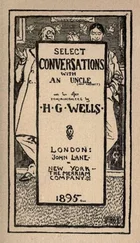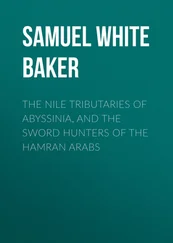Samuel White Baker - Wild Beasts and Their Ways, Reminiscences of Europe, Asia, Africa and America. Volume 1
Здесь есть возможность читать онлайн «Samuel White Baker - Wild Beasts and Their Ways, Reminiscences of Europe, Asia, Africa and America. Volume 1» — ознакомительный отрывок электронной книги совершенно бесплатно, а после прочтения отрывка купить полную версию. В некоторых случаях можно слушать аудио, скачать через торрент в формате fb2 и присутствует краткое содержание. Жанр: Путешествия и география, История, foreign_edu, foreign_antique, foreign_prose, на английском языке. Описание произведения, (предисловие) а так же отзывы посетителей доступны на портале библиотеки ЛибКат.
- Название:Wild Beasts and Their Ways, Reminiscences of Europe, Asia, Africa and America. Volume 1
- Автор:
- Жанр:
- Год:неизвестен
- ISBN:нет данных
- Рейтинг книги:3 / 5. Голосов: 1
-
Избранное:Добавить в избранное
- Отзывы:
-
Ваша оценка:
- 60
- 1
- 2
- 3
- 4
- 5
Wild Beasts and Their Ways, Reminiscences of Europe, Asia, Africa and America. Volume 1: краткое содержание, описание и аннотация
Предлагаем к чтению аннотацию, описание, краткое содержание или предисловие (зависит от того, что написал сам автор книги «Wild Beasts and Their Ways, Reminiscences of Europe, Asia, Africa and America. Volume 1»). Если вы не нашли необходимую информацию о книге — напишите в комментариях, мы постараемся отыскать её.
Wild Beasts and Their Ways, Reminiscences of Europe, Asia, Africa and America. Volume 1 — читать онлайн ознакомительный отрывок
Ниже представлен текст книги, разбитый по страницам. Система сохранения места последней прочитанной страницы, позволяет с удобством читать онлайн бесплатно книгу «Wild Beasts and Their Ways, Reminiscences of Europe, Asia, Africa and America. Volume 1», без необходимости каждый раз заново искать на чём Вы остановились. Поставьте закладку, и сможете в любой момент перейти на страницу, на которой закончили чтение.
Интервал:
Закладка:
We all know the attachment and fidelity of the dog, who appears to have been created specially to become the friend of the human race. He attaches himself equally to the poor man and the rich, and shares our fortunes "for better, for worse," clinging with heroic loyalty to his master when all other friends may have abandoned him. The power of memory is wonderfully exhibited, considering the shortness of life which Nature, by some mischance has accorded to man's best friend.
"While thus Florinda spake, the dog who lay Before Rusilla's feet, eyeing him long And wistfully, had recognised at length, Changed as he was and in those sordid weeds, His royal master. And he rose and lick'd His withered hand, and earnestly looked up With eyes whose human meaning did not need The aid of speech; and moan'd, as if at once To court and chide the long-withheld caress… . . . . . . . Disputing, he withdrew. The watchful dog Followed his footsteps close. But he retired Into the thickest grove; there yielding way To his o'erburthen'd nature, from all eyes Apart, he cast himself upon the ground, And threw his arms around the dog, and cried While tears stream'd down. Thou Theron, thou hast known Thy poor lost master… Theron, only thou!"—
Southey's "Roderick, last of the Goths."
In case of danger the dog will defend his master, guided by his own unaided intelligence; he at once detects and attacks the enemy. In wild sports he *shares the delight of hunting equally with his master, and the two are inseparable allies. The day is over, and he lies down and sleeps before the fire at his master's feet, and dreams of the dangers and exploits; he is a member of his master's household.
The elephant is, in my opinion, overrated. He can be educated to perform certain acts, but he would never volunteer his services. There is no elephant that I ever saw who would spontaneously interfere to save his master from drowning or from attack. An enemy might assassinate you at the feet of your favourite elephant, but he would never attempt to interfere in your defence; he would probably run away, or remain impassive, unless guided and instructed by his mahout. This is incontestable; the elephant will do nothing useful unless he is specially ordered to perform a certain work or movement.
While condemning this apathetic character, we must admit that in the elephant the power of learning is extraordinary, and that it can be educated to perform wonders; but such performances are only wonderful as proving the necessary force of direction and guidance by a superior power, to which the animal is amenable.
I have had very many years' experience with elephants, both Asiatic and African, and in my opinion they are naturally timid. Although in a wild state the males are more or less dangerous, especially in Africa, the herd of elephants will generally retreat should they even wind an unseen enemy. This timidity is increased by domestication, and it is difficult to obtain an elephant sufficiently staunch to withstand the attack of any wild animal. They will generally turn tail, and not only retreat gracefully, but will run in a disgraceful panic, to the great danger of their riders should the locality be forest.
The difference in species is distinct between the Asiatic and the African. It is at all times difficult to give the measurement of a dead animal, especially when so enormous, as the pressure of weight when alive would reduce the height afforded by measurement when the body is horizontal.
The well-known African elephant Jumbo that was sold to America by the Zoological Society of London, was brought up in confinement since its early existence, when it was about 4 feet 6 inches high. That elephant was carefully weighed and measured before it left England, with the result, of height at shoulder, 11 feet; weight, six tons and a half. The girth of the fore-foot when the pressure of the animal's weight was exerted, was exactly half the perpendicular height of the elephant. I have seen very much larger animals in Africa, but there is nothing in India to approach the size of Jumbo.
There is no reason why the African elephants should not be tamed and made useful, but the difficulty lies in obtaining them in any great numbers. The natives of Africa are peculiarly savage, and their instincts of destruction prevent them from capturing and domesticating any wild animals. During nine years' experience of Central Africa I never saw a tamed creature of any kind, not even a bird, or a young antelope in possession of a child. The tame elephant would be especially valuable to an explorer, as it could march through streams too deep for the passage of oxen, and in swimming rivers it would be proof against the attacks of crocodiles. So few African elephants have been tamed in proportion to those of Asia that it would be difficult to pronounce an opinion upon their character when domesticated, but it is generally believed by their trainers that the Indian species is more gentle and amenable to discipline. The power of the African is far in excess of the Asiatic. Nine feet at the highest portion of the back is a good height for an Indian male, and eight feet for the female, although occasionally they are considerably larger. There are hardly any elephants that measure ten feet in a direct perpendicular, although the mahouts pretend to fictitious heights by measuring with a tape or cord from the spine, including the curve of the body.
As Jumbo was proved to have attained the height of eleven feet although in captivity from infancy, it may be easily imagined that in a wild state the African elephant will attain twelve feet, or even more. I have myself seen many animals that would have exceeded this, although it would be impossible to estimate their height with accuracy.
The shape of the African variety is very peculiar, and differs in a remarkable manner from the Asiatic. The highest point is the shoulder, and the back is hollow; in the Indian the back is convex, and the shoulder is considerably lower. The head of the African is quite unlike that of the Indian; and the ears, which in the former are enormous, completely cover the shoulder when thrown back. The best direction for a vital shot at an African elephant is at the extremity of the ear when flapped against the side. A bullet thus placed will pass through the centre of the lungs. The Indian elephant has many more laminae in the teeth than the African, constituting a larger grinding surface, as the food is different. The African feeds upon foliage and the succulent roots of the mimosa and other trees, which it digs up with its powerful tusks; the forests are generally evergreen, and being full of sap, the bark is easier to masticate than the skeleton trees of India during the hottest season. Both the Indian and African varieties have only four teeth, composed of laminae of intensely hard enamel, divided by a softer substance which prevents the surface from becoming smooth with age; the two unequal materials retain their inequality in wear, therefore the rough grinding surface is maintained notwithstanding the work of many years. A gland at the posterior of the jaw supplies a tooth-forming matter, and the growth of fresh laminae is continuous throughout life; the younger laminae form into line, and march forward until incorporated and solidified in the tooth.
It is impossible to define exactly the limit of old age, as there can be little doubt that captivity shortens the duration of life to a great degree. We can only form an opinion from the basis of growth when young. As an elephant cannot be fully developed in the perfection of ivory until the age of forty, I should accept that age in a wild animal as the period of a starting-point in life, and I should imagine that the term of existence would be about a hundred and fifty years.
The life of an elephant in captivity is exactly opposed to its natural habits. A wild Indian elephant dreads the sun, and is seldom to be found exposed in the open after dawn of day. It roams over the country in all directions during night, and seeks the shelter of a forest about an hour before the sun rises. It feeds heartily, but wastefully, tearing down branches, half of which it leaves untouched; it strips the bark off those trees which it selects as tasteful, but throws wilfully away a considerable portion. Throughout the entire night the elephant is feeding, and it is curious to observe how particular this animal is in the choice of food. Most wild animals possess a certain amount of botanical knowledge which guides them in their grazing; the only exception is the camel, who would poison himself through sheer ignorance and depraved appetite, but the elephant is most careful in its selection of all that is suitable to its requirements. It is astonishing how few of the forest trees are attractive to this animal. Some are tempting from their foliage, others from their bark (vide the powerfully astringent Catechu), some from the succulent roots, and several varieties from the wood, which is eaten like the sugar-cane. There is one kind of tree the wood of which alone is eaten after the rind has been carefully stripped off.
Читать дальшеИнтервал:
Закладка:
Похожие книги на «Wild Beasts and Their Ways, Reminiscences of Europe, Asia, Africa and America. Volume 1»
Представляем Вашему вниманию похожие книги на «Wild Beasts and Their Ways, Reminiscences of Europe, Asia, Africa and America. Volume 1» списком для выбора. Мы отобрали схожую по названию и смыслу литературу в надежде предоставить читателям больше вариантов отыскать новые, интересные, ещё непрочитанные произведения.
Обсуждение, отзывы о книге «Wild Beasts and Their Ways, Reminiscences of Europe, Asia, Africa and America. Volume 1» и просто собственные мнения читателей. Оставьте ваши комментарии, напишите, что Вы думаете о произведении, его смысле или главных героях. Укажите что конкретно понравилось, а что нет, и почему Вы так считаете.












